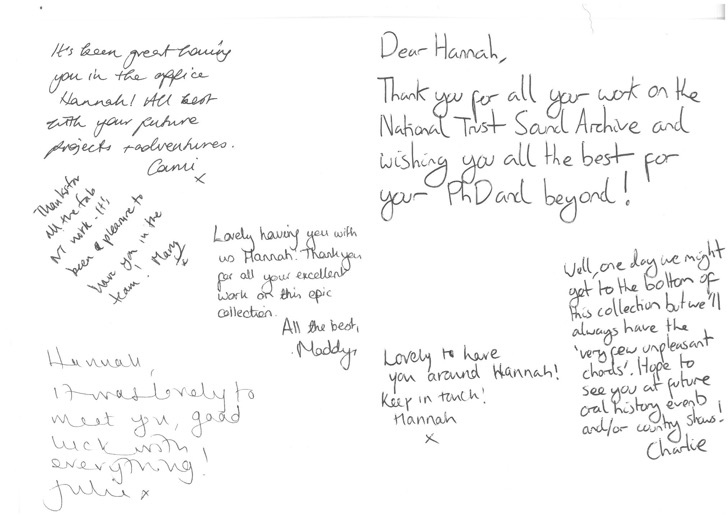“The best laid schemes o’ Mice an’ Men,
Robert Burns (1759-1796) To a Mouse, On turning her up in her Nest with the Plough, November, 1785
Gang aft agley”
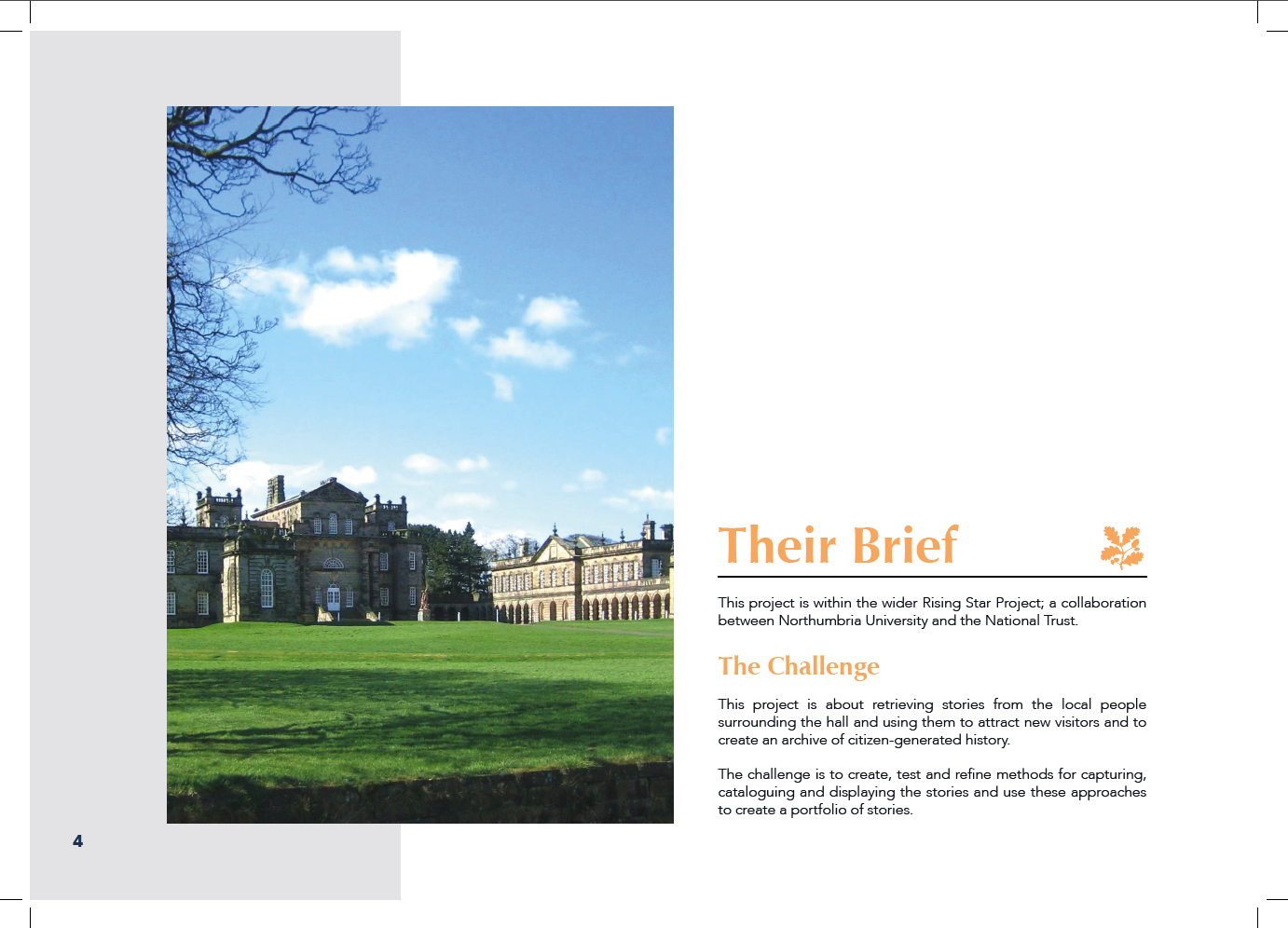
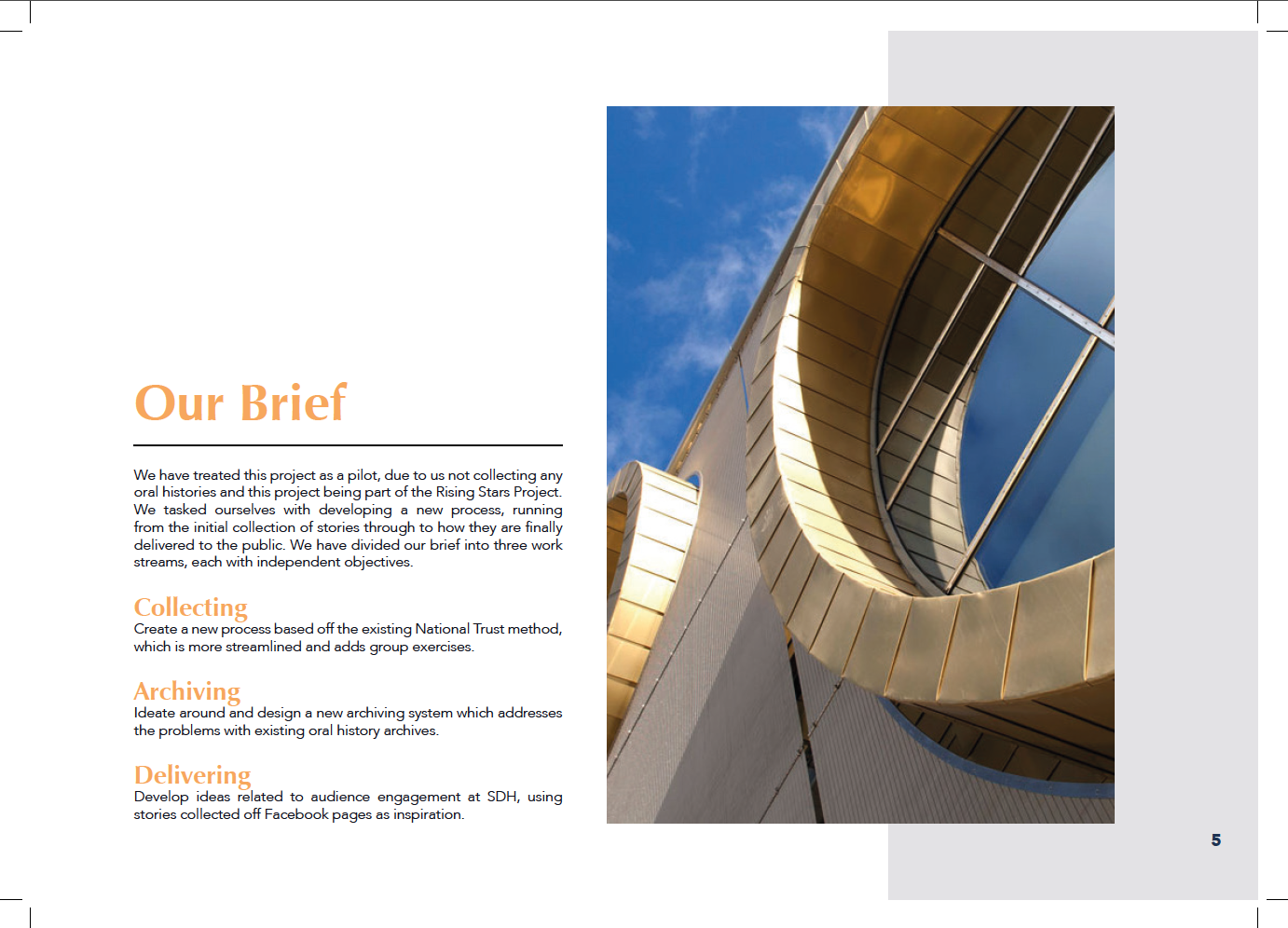
The brief for the final project of my Master‘s degree – OHD_RPT_0010
prac. 001 The brief for the final project of my Master‘s degree in Multidisciplinary Innovation at Northumbria University was to set up an oral history project at the National Trust property Seaton Delaval Hall. One of the final conclusions my team came to was how archiving oral histories was quite tricky, therefore as a final output we created a brief for another project that would delve into the archiving of oral histories.1 This brief became the starting point for my PhD research.


The archiving brief made during my Master’s – OHD_RPT_0010
The 2021 timeline – OHD_GRP_0162
prac. 002 The original approach for this project is illustrated in a timeline made in 2021.2 It was very simple: a designer (me) was going to record oral histories and then use the recordings to design a system for making reuse easy. Seaton Delaval Hall was going to provide me with my oral history participants and be my testing grounds for my new system.
This did not go as planned for multiple reasons.
prac. 003 Initially, I became increasingly sceptical that designing a “solution” would solve the problem with oral history reuse. There is a suggestion of these insecurities in what I presented during my interview for this PhD in early 2020.3 The AI summary of the presentation script shows that I wanted to explore:
new approaches to archiving and accessing oral histories that go beyond traditional methods. Developing user-friendly and engaging interfaces for exploring and interacting with oral history collections, [but also address] the challenges of maintaining and updating digital technologies over time.
The final slide of my presentation for my interview – OHD_PRS_0124
Google Gemini Summary of OHD_PRS_0124: Presentation/Interview for CDA
[generated 04 / 01 / 2025]
This presentation outlines the key challenges and opportunities within the proposed PhD research, focusing on the intersection of oral history, design, and heritage management at Seaton Delaval Hall.
Key Challenges:
Bridging Disciplinary Gaps: Communication and collaboration between oral historians, designers, and National Trust staff can be challenging due to differing perspectives, terminologies, and priorities. Overcoming communication barriers and fostering effective cross-disciplinary dialogue is crucial.
Defining and Achieving Project Goals: Determining the specific goals and objectives of the project and aligning them with the needs and expectations of all stakeholders. Managing expectations and navigating potential conflicts between different parties.
Addressing the "Deep Dark Secret" of Oral History: Finding innovative ways to ensure the long-term accessibility, usability, and relevance of archived oral history recordings.
Technological Limitations: Addressing the challenges of maintaining and updating digital technologies over time. Finding sustainable solutions that are not overly reliant on complex or rapidly evolving technologies.
Key Opportunities:
Developing Innovative Archival Practices: Exploring new approaches to archiving and accessing oral histories that go beyond traditional methods. Developing user-friendly and engaging interfaces for exploring and interacting with oral history collections.
Fostering Community Engagement: Engaging the local community in the oral history process and creating a sense of ownership over the collected materials.
Advancing Cross-disciplinary Research: Developing new methodologies and frameworks for collaborative research across disciplines, such as oral history, design, and heritage management.
Addressing the "Digital Divide": Ensuring that digital technologies are accessible and usable by all members of the community, regardless of their technological skills or socio-economic background.
The presentation emphasizes the importance of a collaborative and iterative approach, with ongoing reflection and adaptation throughout the research process. It highlights the need to embrace uncertainty and explore the unknown, while also acknowledging the potential challenges and limitations.
prac. 004 I presented similar ideas over a year later at the start of my research period, only this time I emphasised how humans would have to fill the gaps of digital systems.4
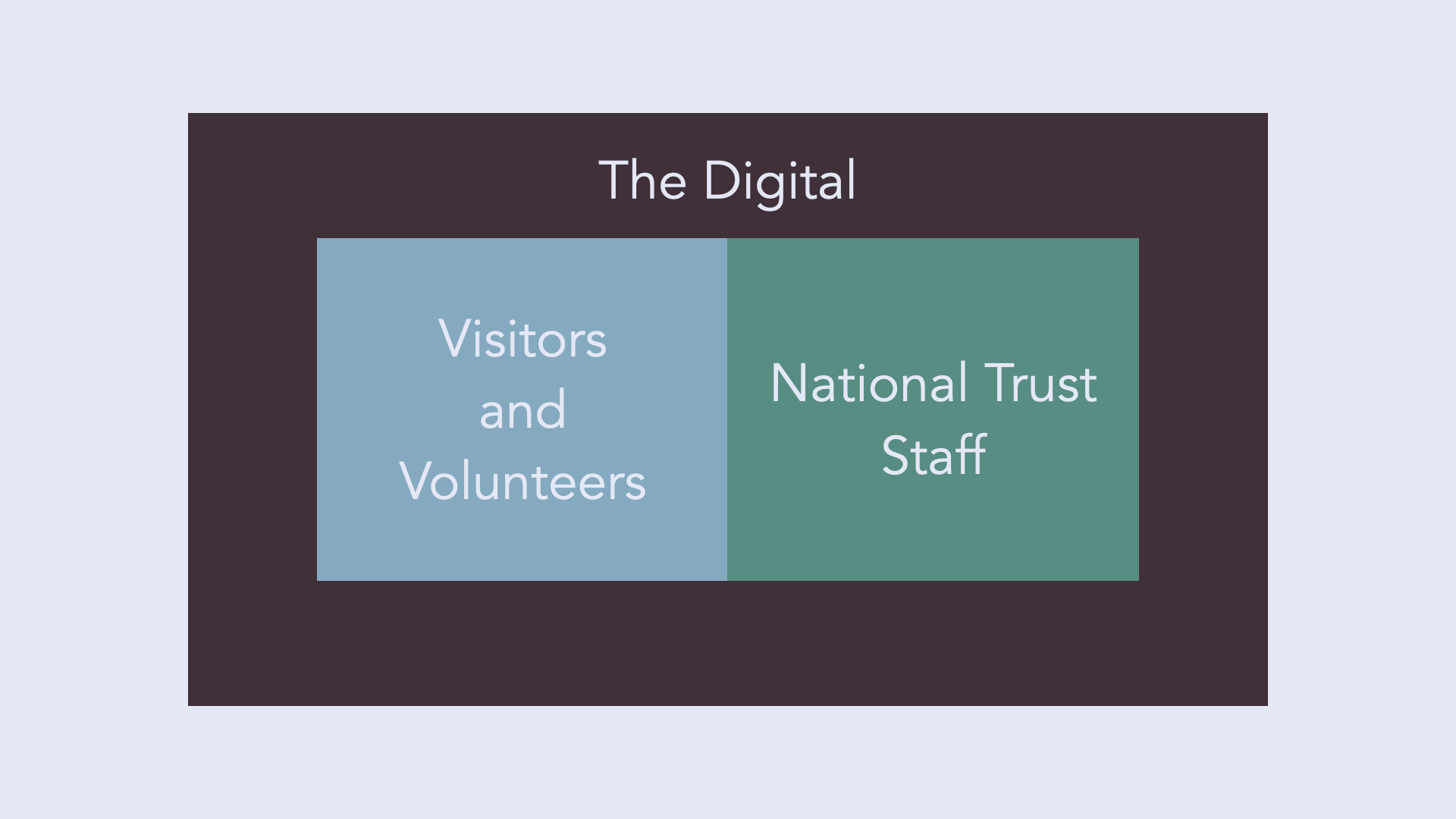
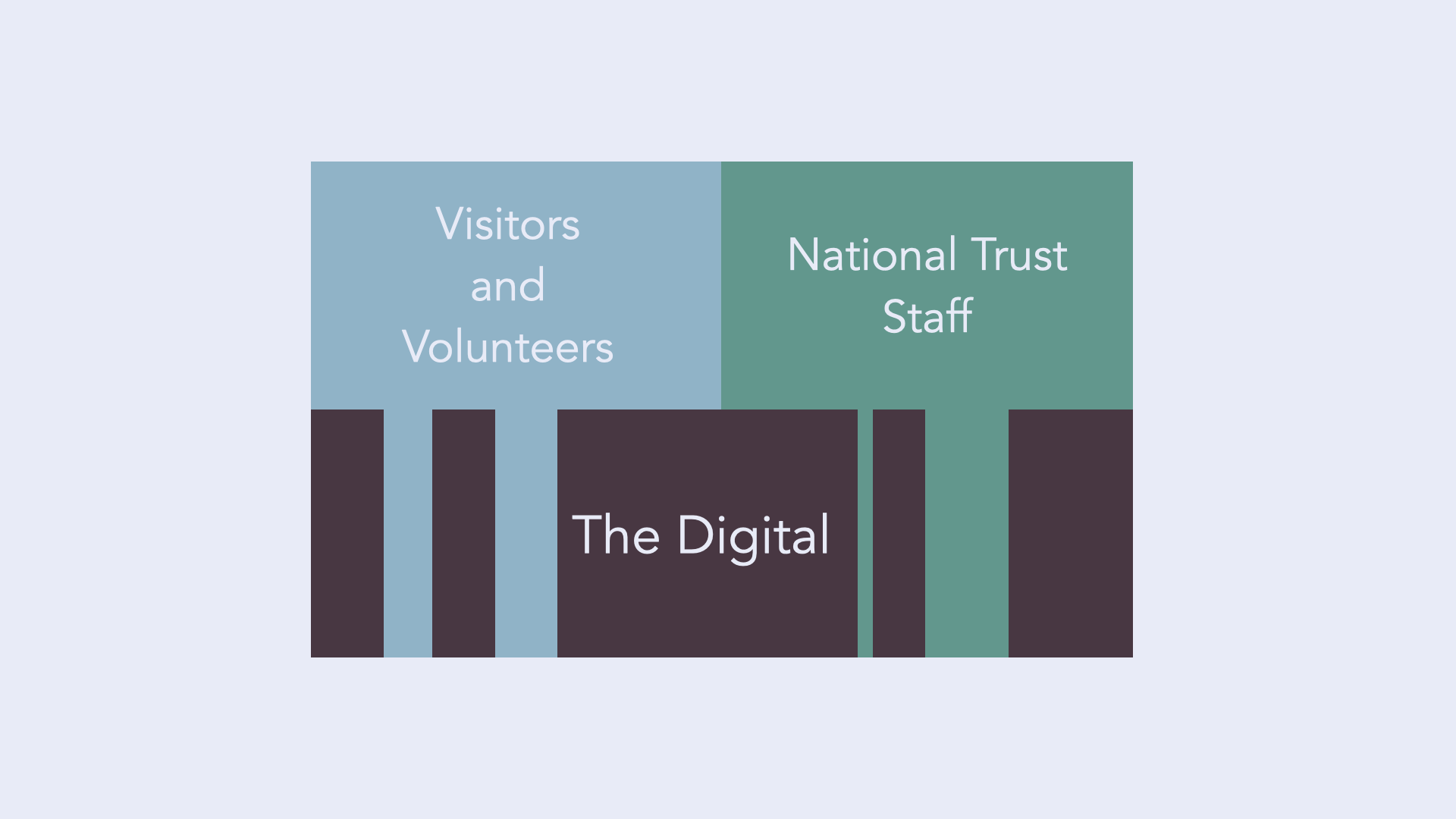
Slides from one of my earliest presentations – OHD_PRS_0125
Google Gemini Summary of OHD_PRS_0125: Oral History’s Design: Sustaining visitor (re)use of oral histories on heritage sites
[generated 04 / 01 / 2025]
Challenges:
Bridging the gap between oral history, design, and heritage management: Requires effective communication and collaboration across disciplines.Needs to address the diverse needs and perspectives of all stakeholders.
Developing a sustainable and user-friendly system: Ensuring long-term accessibility and usability of the system for both staff and the public. Addressing the challenges of maintaining and updating digital technologies over time.
Balancing human and digital approaches: Finding the right balance between human interaction and digital technologies in the archival process. Recognizing the limitations of both digital and physical archives.
Ethical considerations: Ensuring equitable access and addressing issues of power and representation in the collection and dissemination of oral histories.
Environmental sustainability: Considering the environmental impact of digital technologies and the potential risks associated with climate change.
Opportunities:
Fostering community engagement: Creating a more participatory approach to oral history collection that empowers the local community.
Developing innovative archival practices: Exploring new methods for archiving and accessing oral histories that go beyond traditional models.
Leveraging technology to enhance accessibility: Utilizing digital tools to make oral histories more accessible to a wider audience.
Developing a more sustainable and resilient archival system: Combining digital and physical approaches to ensure long-term preservation and access.
Conducting cross-disciplinary research: Exploring new methodologies for collaborative research across disciplines, such as oral history, design, and heritage management.
The presentation emphasizes the importance of a human-centered approach, recognizing the limitations of technology and the crucial role of human interaction in the collection, preservation, and interpretation of oral histories. It also highlights the need for a dynamic and adaptable system that can evolve over time to meet the changing needs of the community and the challenges of the digital age.
prac. 005 I also researched my predecessors, those who in the decades prior to this research project have tried to improve the reuse of oral history reuse by utilising the latest technology of the time, from CD-roms to the World Wide Web to off-the-shelf market research software.
prac. 006 Project Jukebox
- Date: c. 1988
- Location: University of Alaska, Fairbanks, Alaska.
- ‘Project Jukebox is a multimedia workstation which brings audio, written, and photographic records to the researcher at the click of a computer mouse.’5 Funded by an Apple Library of Tomorrow grant.6
- As Project Jukebox was initially set up in the early nineties it had to move on from ‘compact disks’ to better fit the modern age of technology.
- https://jukebox.uaf.edu
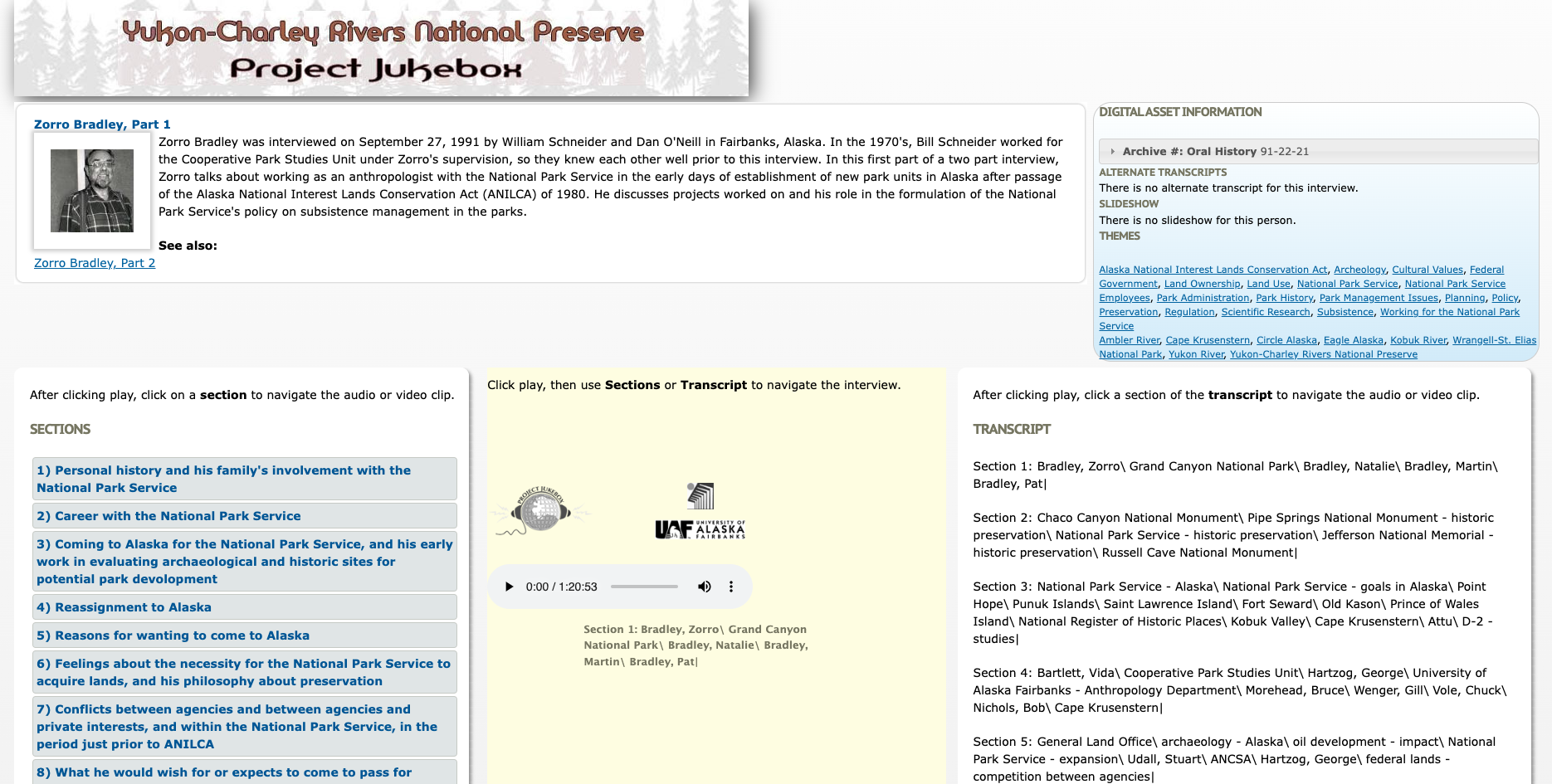
prac. 007 Interclipper
- Date: c.1998
- Location: University of Buffalo’s Technology Incubator.
- Originally an ‘off-the-shelf software from market research, demonstrated at the Oral History Association annual meeting in Buffalo’ in 1998. The software linked audio or video files ‘and a fairly robust multifield database for annotating and marking audio/video passages.’7
- Significant lack of adoption and a general consensus that it was difficult to use.8
- https://interclipper.com/lander [dead link]
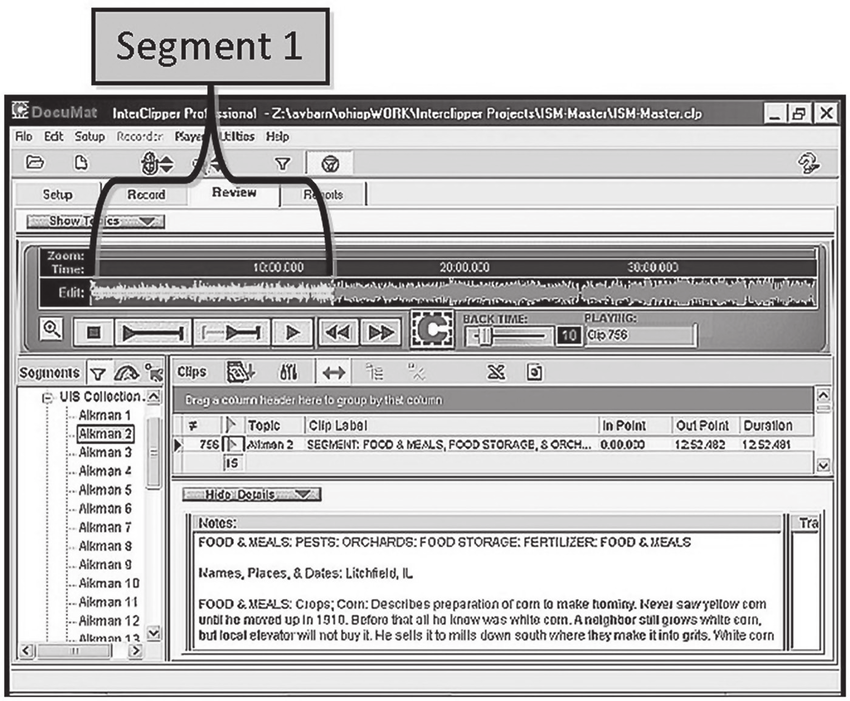
InterClipper software
prac. 008 Civil Rights Movement in Kentucky Oral History Project Digital Media Database
- Date: 1998
- Location: Kentucky Historical Society
- ‘An online digital project which offered themed and geographical browsing of content, global search, and a user experience that drilled down to organized audio excerpts as well as linking to online, searchable transcripts.’9
- The site was ‘digitally abandoned, opened up to online hackers and eventually taken down.’10 It is now back online.
- https://history.ky.gov/news/civil-rights-movement-in-kentucky-oral-history-project
prac. 009 VOAHA
- Date: 2003
- Location: California State University, Long Beach
- A project based around a collection of feminist oral history recordings with the aim of maintaining the orality of the recordings through ‘curated excerpts, carefully selected and comprehensively described for the user.’11
- After the initial development of VOAHA it was plagued with all sorts of issues such as: a system crash in 2010, key team members retiring or passing away, and support for special projects being retracted. In the end VOAHA was absorbed into the university’s main library system, losing its interactive elements.12
- https://womensdigitallibrary.org/voaha-ii-virtual-oral-aural-history-archive-womens-history/
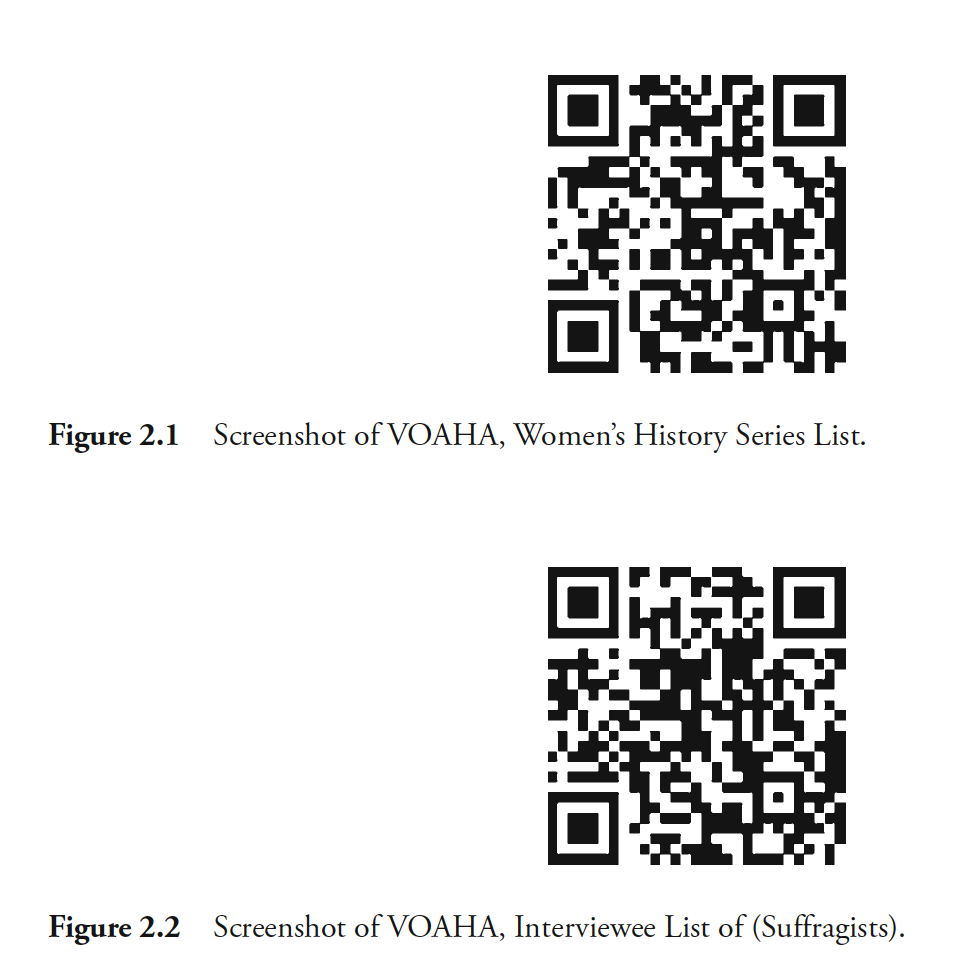
prac. 010 Stories Matter
- Date: c. 2005, relaunched in c. 2023
- Location: Concordia University, Montreal, Quebec
- Stories Matter was branded as a software designed by oral historians for oral historians. ‘It encourages a shift away from transcription, enabling oral historians to continue to interact with their interviews in an efficient manner without compromising the greater life history context of their interviewees.’13
- The first version stopped working after the discontinuation of Adobe Flash. A new version was released after a 120,000 dollar investment.14
- https://github.com/kamicode/stories-matter-releases
prac. 011 OHMS
- Date: 2009
- Location: Louie B. Nunn Center for Oral History at the University of Kentucky
- ‘A web-based digital tool to integrate the audio and video interview recordings in their entirety, with the searchable and readable text that users crave and demand.’15
- Since its initial creation in 2009 Boyd has continued to work on the maintainability of OHMS. In 2023 OHMS was added to the Aviary platform, and in 2025 additional features will be rolled out to help it better integrate into the new era of AI.16
- https://www.oralhistoryonline.org/
prac. 012 I felt a tension between a desire to make a product similar to those mentioned above, and a desire to ensure that whatever I designed would actually be realised and used. The endeavours of my predecessors were plagued by obsolescence and limited budgets. As the design theorist Cameron Tonkinwise writes, ‘a wide range of people must be convinced to lend their money and materials and components and time and skills to realizing a particular design.’17 This produced some uncertainty around the output as I was unsure whether I had enough time to convince people to ‘lend their money and materials and components and time and skills’ to fully realise my final output.


[missing image]
prac. 013 My doubts around creating a product and whether it might be adopted were further confirmed by the designs I made and later abandoned.18 These designs varied from digital to analogue, but in every instance, I struggled to imagine how they would be integrated into the existing systems of the Hall. Susan Leigh Star experienced a similar situation when she developed ‘an electronic shared laboratory and publishing space’ for a group of biologists. Even though she and her team followed the basic principles of participatory design, the biologist ended up not using the system because, as Star acknowledged, they had not considered the infrastructure that existed around the system.19 When I look back at the product designs I created, it is now obvious that I had not considered the associated processes. I had not thought about where these practical products would be housed, who would maintain them, and who would monitor them. Neither had I considered the ethical questions these products evoked, and what paperwork would be necessary for the product to function.
prac. 014 Take for example the digital solutions I considered, such as the ‘Transcription Ribbon.’20 To have something like this adopted, I would need a very large number of people to be on board, from software developers to marketing experts. Within the context of my case study the adoption of such a design would have been completely impossible. The Hall is not allowed to use any software that has not been approved by the wider Trust and the Trust has a rather rigid IT system and policy, which at the time I was developing these designs was having a significant reshuffle because of the Covid-19 pandemic.21


prac. 015 I even created analogue product solutions, after an interviewee emphasised her difficult relationship with digital technology during my first oral history interview.22 In his book The Shock of the Old, David Edgerton views the history of technology through the lens of use instead of innovation, offering up a radically different perspective on technology, one where old and new are all jumbled up together:
Since the late 1960s many more bicycles were produced globally each year than cars. The guillotine made a gruesome return in the 1940s. Cable TV declined in the 1950s to reappear in the 1980s. The supposedly obsolete battleship saw more action in the Second World War than in the First. […] The horse made a greater contribution to Nazi conquest than the V2.23
In response to Edgerton’s book and the interviewee’s remark, I created the ‘Ghost Boxes’24 and ‘Sound Box’25 to avoid the issue of integrating the design into the Trust’s IT system and accommodating different levels of familiarity with digital technology.


prac. 016 However, with these boxes I was still missing part of the structure, as I had not considered how these boxes were going to be maintained, and the ethical and legal implications of collecting people’s comments and their personal data.
prac. 017 The destructive side of design also fed into my fear of creating a single solution to the oral history reuse and access problem. In Ruined by Design Mike Monteiro discusses the particular destruction caused by various products created in Silicon Valley.26 Tonkinwise also emphasises the destructive nature of design claiming, ‘My colleagues teach the students to design stuff, and I teach them not to.’27 Monteiro refers to Erika Hall and Kio Stark’s book, Just Enough Research, which offers examples of failed designs, such as the Segway, as examples of people not doing enough research before they design.28 I was afraid that I would not be able to do sufficient research for people to feel confident enough to sacrifice their time, money and skills to help integrate my design into their existing systems.
prac. 018 Another reason I was unsure about designing a specific solution was that it is difficult to test an archive.29 Solutions to wicked problems cannot be tested in their entirety because ‘any solution, after being implemented, will generate waves of consequences over an extended—virtually an unbounded—period of time.’30 In my project the initial aim was to design a solution for the archiving of oral histories, the consequences of which will only be known years, or more likely decades, into the future.
prac. 019 In addition, my collaboration partners at Seaton Delaval Hall and the National Trust moved at a slower pace than my original timeline had accounted for,31 and a workshop I ran during the Seaton Delaval Hall Community Research Day indicated there was opposition to radical change or experimentation more generally.32 This was especially the case with the Hall as the Trust’s presence had not always been welcomed by members of the local community, adding to staff anxieties concerning risks arising from trialling new developments. These factors are relevant to the fifth property of wicked problems: ‘every solution to a wicked problem is a ‘one-shot operation’; because there is no opportunity to learn by trial-and-error, every attempt counts significantly.’33
Philosophy is easier than reality OHD_BLG_0043
On Monday 11th April 2022 I attended and ran a workshop at the Seaton Delaval Hall Community Research Day. It was an exceptionally interesting affair and mostly certain did not go the way I had imagined. If I had to sum it up I would describe it as engaging but impractical. To say that it got deep real quick would be an understatement but the to which it went was fascinating. It was also great to just bounce ideas off people. However it felt like whenever I attempted to move the conversation to getting to more practical solutions, people rather stayed in a philosophical and imaginary realm, or they would just explain why it would not be possible to change that.

prac. 020 All this put me in a rather odd position, where I felt I could not comprehensively test solutions or do enough research for a solution to be adequate enough for the staff and volunteers at Seaton Delaval Hall. However this changed when I rediscovered Mierle Laderman Ukeles and her work as a maintenance artist through Charlie Morgan’s blog post, ‘When the crisis fades, what gets left behind?’34
prac. 021 Mierle Laderman Ukeles is a feminist performance artist whose work is themed around maintenance and service work. She produced her radical Manifesto for Maintenance Art 1969! out of frustration with the art world’s failure to engage with the routine labour of everyday life, including the toils of (her) motherhood. In her manifesto Ukeles argues that the world is split into a ‘development system’ and a ‘maintenance system.’ Ukeles considers the maintenance system ‘the life instinct’ where the aim is to ‘preserve the new; sustain the change; protect progress’ or to put it in more simple terms: keep things going. The development system – the creation of things – is ‘the death instinct’ focussed on ‘pure individual creation; the new; change; progress.’ Within this stark opposition, the maintenance system holds a lower status in society. Maintenance is seen as repetitive, boring, and endless or, as Ukeles puts it, ‘a drag.’ The development system, on the other hand, is ‘excitement!’ Ukeles summarises the dynamic between these two systems as follows: ‘After the revolution, who’s going to pick up the garbage on Monday morning?’35
prac. 022 The sentiment in Ukeles’ work gave me a new way of framing my research topic. Instead of attempting to solve the issue of oral history reuse I would research what it takes to maintain access to oral histories to ensure reuse can occur in the first place. Thus, my focus switched from development to maintenance, and I created a Manifesto for Maintenance Design 2021!.36 However, working out what maintenance is is a lot more challenging than writing a manifesto because, for the most part, maintenance is taken for granted and invisible.

Manifesto for Maintenance Design 2021! – OHD_WRT_0121


One of my many whiteboards where I try to work out a comprehensive method of articulating maintenance – OHD_WHB_0230
prac. 023 To make the invisible maintenance of this situation visible, I needed a strategy that would get me into the structure of maintenance. I chose action research (AR), a research strategy that integrates research, action, and participation.37 AR seeks to be democratic, by being ‘a situated process’ where the ‘local people,’ are not ‘passive recipients (subjects) of the research process’ but ‘active participants’ in the project.38 To do this, I completed placements at three different organisations, alongside a longer oral history project.
Seaton Delaval Hall

prac. 024 My main task during the placement at Seaton Delaval Hall was to create an on-site Research Room, filled with material that was important to the Hall but could not be included in the collection. The Trust’s collection policy determines that objects, and only objects, enter the collection under two categories: ‘Accessioned objects, which form part of the Trust’s permanent collections and are kept for preservation and in perpetuity,’ and ‘Non-accessioned objects, which do not form part of the Trust’s permanent collections and […] includes objects that help to furnish a property or that can be used for handling or educational purposes.’39 The materials for the Research Room did not qualify for the former category and would often not be taken through the process associated with the latter, in part because the staff, volunteers, and the donor lacked the time to complete the process.
prac. 025 I did not design the physical space of the Research Room, but designed the room’s systems, processes, and accompanying recording forms; learning about copyright and data protection in the process.40 I also occasionally had to step in to do room guiding when there were not enough volunteers. I helped set up the tech for an exhibition.41 And throughout I was able to garner insights into the Trust’s inner workings, from their use of Microsoft SharePoint to their collection policies.
prac. 026 In addition to my placement, I volunteered at the Hall to ensure a better rapport with volunteers and staff,42 and recorded oral histories from various people associated with the hall. I followed through the oral history processes from identifying interviewees through to preparing materials for curation, including making my own copyright and reuse permission forms to ensure the recordings could be donated to Northumberland Archives.43 I also engaged in post-collection public history by running a listening session to share my work more widely with the Hall’s community and edited some of the recordings into a sound walk to demonstrate how oral histories could be used on site.44
prac. 027 Although most of the work was based around the Hall, I also had contact with Trust staff who operated on a national and regional basis,45 and my final workshop was attended by staff and volunteers from all over the country.46
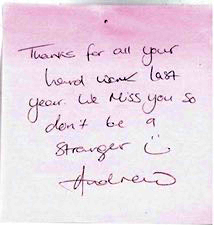
Thank you note from Seaton Delaval Hall – OHD_COL_0324
Archives at NCBS
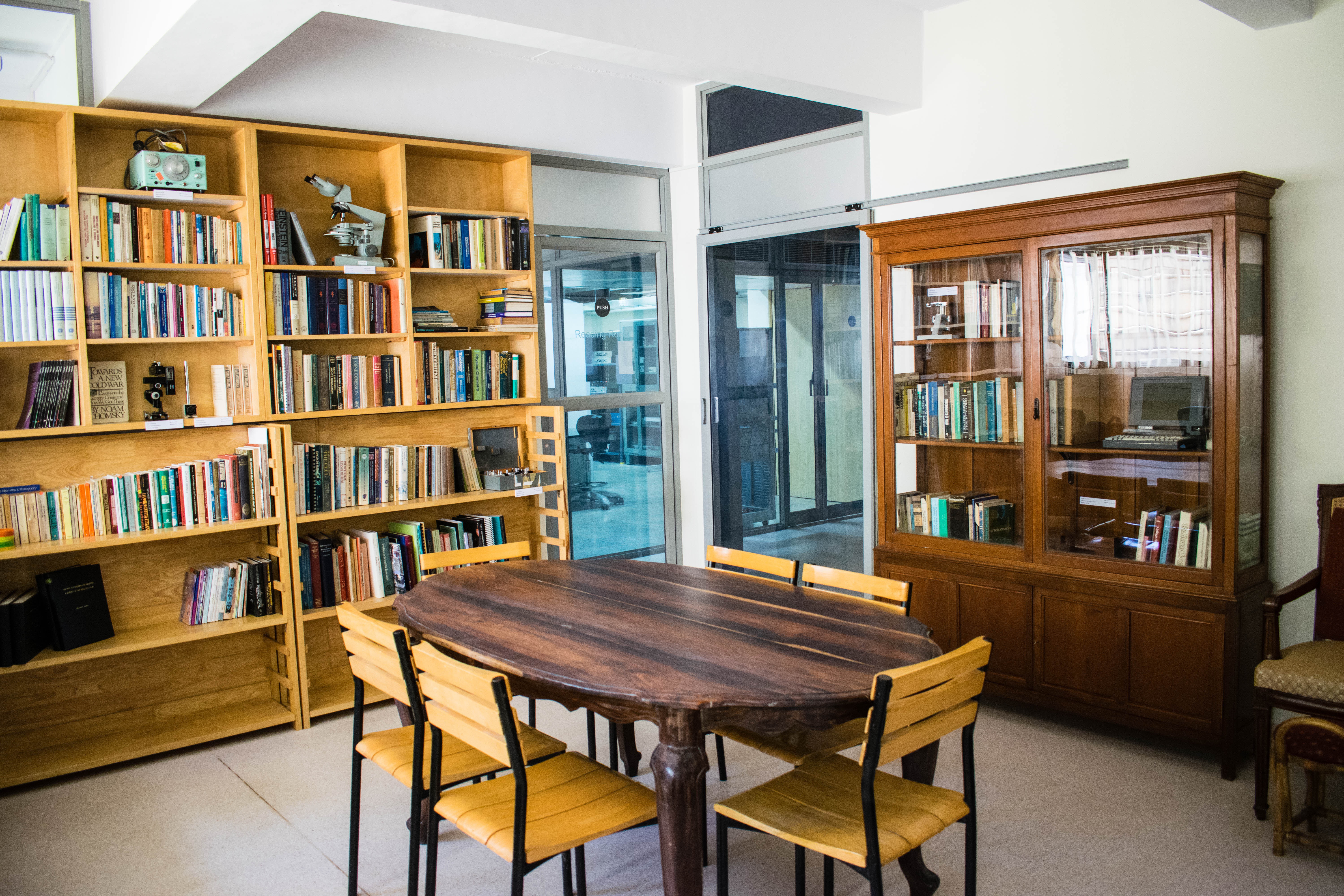
prac. 028 The two main policy documents I produced for Archives at NCBS were a takedown procedure and a sensitivity protocol.47 Since I had already undertaken ethics and legal work at Seaton Delaval Hall, this seemed a natural progression in developing the framework of my practice. In addition, I helped facilitate that year’s staff away day,48 created a poster for the exhibition week of NCBS,49 and gave advice on oral history access options.50
I also observed the work environment of the Archives throughout my placements and created a graphic which summarised my findings.51

Thank you note from an Archives at NCBS colleague – OHD_COL_0324
The British Library

prac. 029 My one-month placement at the British Library involved conducting two audits. The first was an audit of National Trust material that had not yet been catalogued and the second was an audit of the copyright status of the recordings in the National Trust sound collection.52
Thank you note from The British Library – OHD_COL_0324
prac. 030 Within these placements I was not positioned as a consulting designer, but simply a worker, who just happened to do design and was working on a PhD about oral histories. AR positioned me not as the expert designer but the ‘friendly outsider,’ the ‘reflective practitioner,’ a willing participant of the community I was working in.53 Within these placements I was told what needed doing and I did it. I had some autonomy, but generally I was given tasks to fulfil.
Google Gemini Summary of OHD_PRS_0301: Swimming Through Treacle
[generated 02 / 01 / 2025]
Challenges of Designing in GLAM (National Trust):
"Swimming through treacle": You encountered significant bureaucratic hurdles and resistance to change within the National Trust.
Difficulties with traditional design processes: Iterative testing and prototyping were hindered by constraints within the GLAM environment, such as limited access to materials, restricted technology use, and a reluctance to commit to changes.
Focus on "sexy" solutions: Your initial focus on developing "sleek" software solutions proved impractical due to the realities of working within a GLAM institution.
Shifting Focus - Maintenance as a Core Principle:
Learning from past failures: Recognizing that previous attempts at making oral histories more reusable often failed due to a lack of consideration for long-term maintenance.
Inspiration from Mierle Laderman Ukeles: Her concept of "maintenance art" and the distinction between "death instinct" (development) and "life instinct" (maintenance) profoundly influenced your research.
Embracing action research: Working directly within GLAM institutions, taking on tasks and collaborating with stakeholders, provided invaluable insights into the challenges and realities of archival work.
Key Learnings:
The importance of understanding GLAM's core functions: Recognizing that GLAM institutions primarily collect and preserve materials, often with complex legal and ethical considerations.
Balancing change and stability: Finding a balance between innovation and the need for long-term sustainability in archival practices.
The value of a "framework" approach: Rather than dictating specific solutions, focusing on creating flexible frameworks that allow GLAM institutions to adapt to changing needs.
prac. 031 These placements and case study revealed to me the realities of innovation in a maintenance orientated organisation such as archives and heritage sites. I was able to directly experience the environment my output would have to integrate into, and what the priorities were in the workplace, which distractions occurred, and the feelings and attitude the staff had to certain forms of work. For example, the tasks I was assigned revealed how these were not prioritised by the full-time staff. In addition, being embedded into these organisations ensured the outputs I made during my placements such as the Research Room guide, the takedown policy, or the audit of the National Trust’s sound collection all reflect and mimic a format that is familiar to my colleagues in the respective organisations. But when these outputs are brought together, they form a general idea of oral history research which I believe can be used to inspire those who wish to record, archive, and reuse oral history to consider the maintenance of oral histories more consciously.
prac. 032 To summarise, I was sceptical of my initial understanding of this project’s aim but the rediscovery of Ukeles amongst other things made me re-evaluate and pivot towards a more maintenance-oriented way of thinking. This focus on maintenance forced me to drop my professional façade and work alongside the people who I had to rely on to maintain my work once completed.
- James Louwerse, H., Aug 2019, Multidisciplinary Innovation MA 2018-2019 Final Project Report – Seaton Delaval Hall. HJL’s Home. OHD_RPT_0010. ↩︎
- James Louwerse, H., Mar 8, 2021, Project Timetable. OHD_Archive. OHD_GRP_0162. ↩︎
- James Louwerse, H., Feb, 2020, Presentation/Interview for CDA. OHD_Archive. OHD_PRS_0124. ↩︎
- James Louwerse, H., Mar 26, 2021, Oral History’s Design: Sustaining visitor (re)use of oral histories on heritage sites. OHD_Archive. OHD_PRS_0125. ↩︎
- Gretchen L. Lake, ‘Project Jukebox: An innovative way to access and preserve oral history records,’ Provenance, Journal of the Society of Georgia Archivists 9, no. 1 (1991): 24. ↩︎
- Yes, that Apple. Ibid., 27. ↩︎
- Douglas Lambert, and Michael Frisch, ‘Digital Curation through Information Cartography: A Commentary on Oral History in the Digital Age from a Content Management Point of View,’ The Oral History Review 40, no. 1 (2013): 137. ↩︎
- Sherna Berger Gluck, ‘Why do we call it oral history? Refocusing on orality/aurality in the digital age,’ in Oral History and Digital Humanities, ed. Douglas A. Boyd and Mary A. Larson, (Palgrave Macmillan, 2014), 36; Erin Jessee, Stacey Zembrzycki, and Steven High, ‘Stories Matter: Conceptual challenges in the development of oral history database building software,’ Forum Qualitative Sozialforschung/Forum: Qualitative Social Research 12, no. 1 (2011): 3. ↩︎
- Douglas A. Boyd, ‘“I Just Want to Click on It to Listen”: Oral History Archives, Orality, and Usability,’ Oral History and Digital Humanities, ed. Douglas A. Boyd and Mary A. Larson, (Palgrave Macmillan, 2014), 89. ↩︎
- Ibid., 90. ↩︎
- Douglas A. Boyd, and Mary A. Larson, ‘Introduction,’ in Oral History and Digital Humanities, ed. Douglas A. Boyd and Mary A. Larson (Palgrave Macmillan, 2014), 7; Gluck, ‘Why do we call it oral history? Refocusing on orality/aurality in the digital age,’ 38. ↩︎
- Gluck, ‘Why do we call it oral history? Refocusing on orality/aurality in the digital age,’ 45. ↩︎
- Jessee, Zembrzycki, and High, ‘Stories Matter: Conceptual challenges in the development of oral history database building software,’ 1. ↩︎
- Mayra Coelho Jucá dos Santos, ‘Sharing stories and the creative challenge of keeping them alive: Interview with Steven High, founder of the Centre for Oral History and Digital Storytelling at Concordia University, in Montreal,’ História Oral 25, no. 2 (2022): 248. ↩︎
- Boyd, ‘“I Just Want to Click on It to Listen”: Oral History Archives, Orality, and Usability,’ 91. ↩︎
- Doug Boyd, ‘OHMS: Transformational Transcript Changes Coming Soon,’ YouTube video, 05:16, posted by ‘Doug Boyd,’ Nov 7, 2024, accessed Mar 5, 2025, https://www.youtube.com/watch?v=rKIwIspBcFk. ↩︎
- Cameron Tonkinwise, ‘Design for Transitions‒from and to what?’ Design Philosophy Papers 13, no. 1 (2015): 90. ↩︎
- James Louwerse, H., Oct, 2021, No Man’s Land. OHD_Archive. OHD_RPT_0134;
James Louwerse, H., Sep 23, 2021, Transcription Ribbon. Hannah’s Harddrive. OHD_PRT_0221; James Louwerse, H., Oct, 2021, No Man’s Land. OHD_Archive. OHD_RPT_0134;James Louwerse, H., 2021, Designs for archive both analogue and digital. Archive Box 1. OHD_DSN_0014;James Louwerse, H., Aug, 2022, prototype for a sound box. OHD_Archive. OHD_PRT_0217. ↩︎ - Susan Leigh Star, ‘The Ethnography of Infrastructure,’ American Behavioral Scientist 43, no.3 (1999): 380. ↩︎
James Louwerse, H., Sep 23, 2021, Transcription Ribbon. Hannah’s Harddrive. OHD_PRT_0221- Jonathan Knott, ‘National Trust defends restructure plans,’ Museum Association, Aug 28, 2020, accessed Feb 13, 2025, https://www.museumsassociation.org/museums-journal/news/2020/08/national-trust-defends-restructure-plans/. ↩︎
- I gave this interview the label SDH_PP_001. It is unknown to me what the Northumberland Archives has labelled it at the time of writing. ↩︎
- David Edgerton, The Shock of the Old : Technology and Global History since 1900, (Profile, 2008), xii. ↩︎
- James Louwerse, H., Oct, 2021, No Man’s Land. OHD_Archive. OHD_RPT_0134;
James Louwerse, H., 2021, Designs for archive both analogue and digital. Archive Box 1. OHD_DSN_0014. James Louwerse, H,. Aug, 2022, prototype for a sound box. OHD_Archive. OHD_PRT_0217- Mike Monteiro, Ruined by Design, (Mule Design, 2019). ↩︎
- Cameron Tonkinwise, ‘Design away,’ in Design as Future-Making, ed. Barbara Adams and Susan Yelavich, (Bloomsbury Academic, 2014), 198. ↩︎
- Erika Hall, Just Enough Research (A Book Apart, 2013),1. ↩︎
- James Louwerse, H., Feb 2, 2022, Testing archives. OHD_Archive. OHD_BLG_0049. ↩︎
- Horst Rittel, and Melvin Webber, ‘Dilemmas in a General Theory of Planning,’ Policy Sciences 4, no. 2 (1973): 163. ↩︎
- James Louwerse, H., Mar 8, 2021, Project Timetable. OHD_Archive. OHD_GRP_0162. ↩︎
- James Louwerse, H., Apr 12, 2022, Philosophy is easier than reality. OHD_Archive. OHD_BLG_0043. ↩︎
- Rittel, and Webber, ‘Dilemmas in a General Theory of Planning,’ 163. ↩︎
- Charlie Morgan, ‘When the crisis fades, what gets left behind?,’ Oral History Society, n.d., c. 2021, accessed Jan 4, 2025, https://www.ohs.org.uk/general-interest/when-the-crisis-fades-what-gets-left-behind/. ↩︎
- Alex Danchev, and Mierle Laderman Ukeles, ‘M81. Mierle Laderman Ukeles: Maintenance Art Manifesto,’ in 100 Artists’ Manifestos, ed. Alex Danchev (Penguin Group, 2011), 382. ↩︎
- James Louwerse, H., Dec 23, 2020, the code/manifesto. OHD_Archive. OHD_WRT_0121. ↩︎
- Davydd Greenwood, and Morten Levin, Introduction to Action Research 2nd Edition: Social Research for Social Change, (Sage Publications, 2007), 2; Davydd Greenwood, and Morten Levin, Introduction to Action Research: Social Research for Social Change, (Sage Publications, 1998), 6. ↩︎
- Greenwood, and Levin, Introduction to Action Research 2nd Edition: Social Research for Social Change, 75; Robert Sommer, and Berbara Baker Sommer, A Practical Guide to Behavioral Research: Tools and Techniques. 5th ed., (Oxford University Press, 2002), 212. ↩︎
- National Trust, National Collections Development Policy 2019-2024, 2019, 6. ↩︎
- James Louwerse, H., Sep 8, 2022, Research Room Donation Flowchart. OHD_Archive. OHD_DSN_0158; James Louwerse, H., Oct 31, 2022, Research Room Acquisition Copyright form. OHD_Archive. OHD_FRM_0192; James Louwerse, H., Oct 25, 2022, Research Room Acquisition Proposal. OHD_Archive. OHD_FRM_0193; James Louwerse, H., Nov 1, 2022, Research Room Agreement. OHD_Archive. OHD_FRM_0194; James Louwerse, H., Oct 31, 2022, Research Room Guide. OHD_Archive. OHD_RPT_0195; James Louwerse, H., Oct 28, 2022, Research Room Information Sheet. OHD_Archive. OHD_WRT_0196; James Louwerse, H., Aug 2, 2022, Research Room Index prototype. OHD_Archive. OHD_DSN_0197. ↩︎
- James Louwerse, H., Aug 4, 2022, Possible options for MP3 players. OHD_Archive. OHD_RPT_0323. ↩︎
- James Louwerse, H., 2023, Thank you notes. OHD_Archive. OHD_COL_0324. ↩︎
- James Louwerse, H., Nov 21, 2023, Final copyright form. OHD_Archive. OHD_FRM_0290; James Louwerse, H., Oct 28, 2024, Receipt of deposit. OHD_Archive. OHD_RCP_0293. ↩︎
- James Louwerse, H., 2023, Thank you notes. OHD_Archive. OHD_COL_0324. ↩︎
- James Louwerse, H., Apr 22, 2021, A Spanner, a Chat and a Gang. OHD_Archive. OHD_BLG_0063; James Louwerse, H., Oct 13, 2022, Presentation for Jo and Heather. OHD_Archive. OHD_PRS_0185; James Louwerse, H., Oct 27, 2022, NT Oral History Workshop. OHD_Archive. OHD_WKS_0208. ↩︎
- James Louwerse, H., Jan 31, 2024, NT OH workshop audio. OHD_Archive. OHD_AUD_0308; James Louwerse, H., Sep, 2023, JAN CRIT PLAN ETC. OHD_Archive. OHD_COL_0279. ↩︎
- James Louwerse, H., Jan 12, 2023, NCBS Takedown and alterations policy. OHD_Archive. OHD_RPT_0249; James Louwerse, H., Feb 13, 2023, NCBS sensitivity check doc. OHD_Archive. OHD_RPT_0250. ↩︎
- James Louwerse, H., Feb 8, 2023, Miro board of the NCBS away day. OHD_Archive. OHD_WHB_0247. ↩︎
- James Louwerse, H., Jan 21, 2023, Archives at NCBS poster. OHD_Archive. OHD_GRP_0314. ↩︎
- James Louwerse, H., Jan 23, 2023, Options for making oral histories accessible. OHD_Archive. OHD_RPT_0256. ↩︎
- James Louwerse, H., Mar 20, 2023, What is Archives at NCBS?. OHD_Archive. OHD_GRP_0261. ↩︎
- James Louwerse, H., Jun 22, 2023, C1168 Audit 2023. OHD_Archive. OHD_COL_0262; James Louwerse, H., May 23, 2023, C1168 uncatalogued items. OHD_Archive. OHD_WRT_0276. ↩︎
- Greenwood, and Levin, Introduction to Action Research 2nd Edition: Social Research for Social Change, 125; Donald Schön, The Reflective Practitioner, (Routledge, 2016). ↩︎


